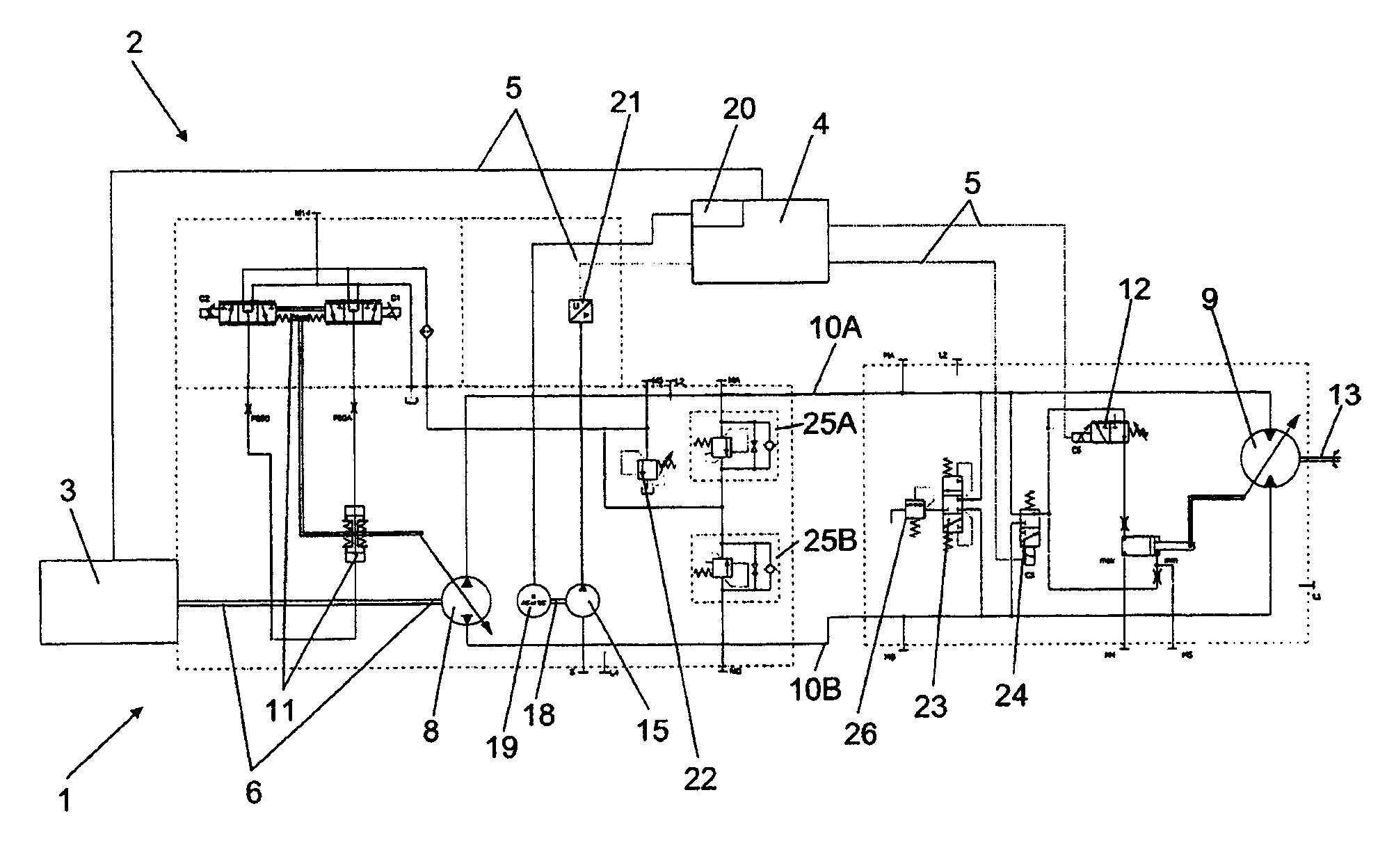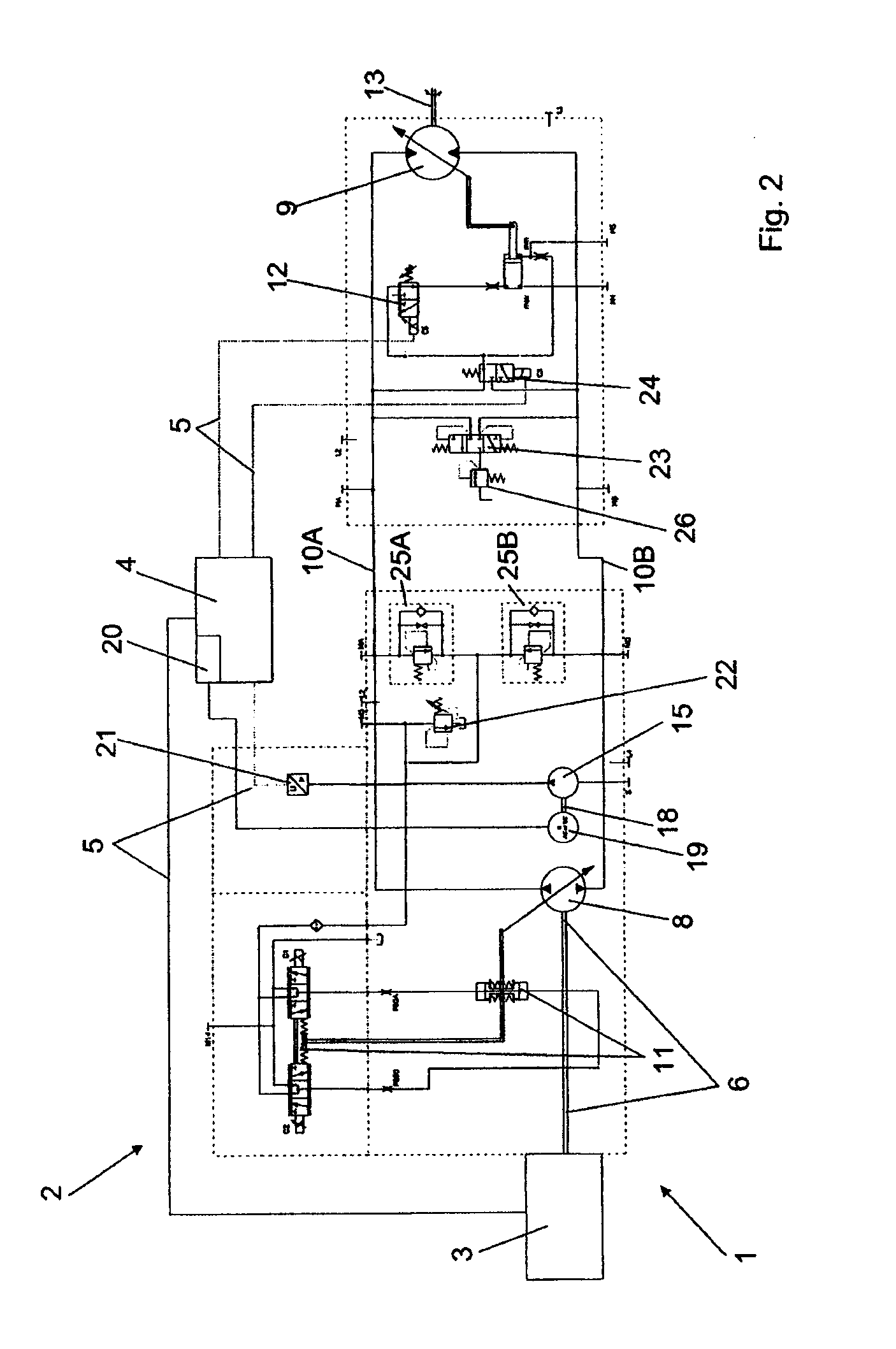Hydraulic drive with an independent charge pump
a charge pump and hydraulic drive technology, applied in the direction of fluid couplings, positive displacement liquid engines, servomotors, etc., can solve the problems of increasing the material expenditure in the cooling system the drive system suffers from power loss, and the hydraulic machine is prone to clogging. the problem of the hydraulic machine, so as to achieve the effect of increasing the expenditure of components and control measures
- Summary
- Abstract
- Description
- Claims
- Application Information
AI Technical Summary
Benefits of technology
Problems solved by technology
Method used
Image
Examples
Embodiment Construction
[0017]FIG. 1 illustrates, in a schematic view, a traction drive 1 having a hydraulic drive 2 according to the prior art. An internal combustion engine 3, usually a diesel engine, serves as a drive for the hydraulic drive 2 and is connected to the electronics 4, in this case driving electronics, via electric signal lines 5. The drive output shaft 6 of the internal combustion engine 3 drives the main pump 8 of the hydraulic drive 2 directly or via a step-up gearing (not shown). Said main pump 8 is connected in a closed circuit, via pressure lines 10A and 10B, to the hydraulic motor 9, illustrated here as a variable displacement motor. The main pump 8 can be adjusted in terms of delivery volume and delivery direction by means of the mechanical-hydraulic servo adjusting arrangement 11, which adjustment takes place according to driving demands which are input into the electronics 4 by the operator of the traction drive 1. The electronics 4 also acts on the motor adjusting arrangement 12 ...
PUM
 Login to View More
Login to View More Abstract
Description
Claims
Application Information
 Login to View More
Login to View More - R&D
- Intellectual Property
- Life Sciences
- Materials
- Tech Scout
- Unparalleled Data Quality
- Higher Quality Content
- 60% Fewer Hallucinations
Browse by: Latest US Patents, China's latest patents, Technical Efficacy Thesaurus, Application Domain, Technology Topic, Popular Technical Reports.
© 2025 PatSnap. All rights reserved.Legal|Privacy policy|Modern Slavery Act Transparency Statement|Sitemap|About US| Contact US: help@patsnap.com



